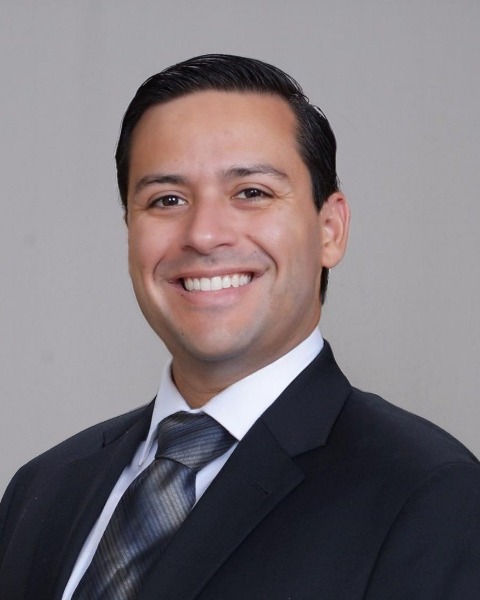Sunday Poster Session
Category: Liver
P1683 - Hepatic Overlap Syndrome in a 30-year-old Female With Multiple Comorbid Conditions: A Case Presentation
Sunday, October 26, 2025
3:30 PM - 7:00 PM PDT
Location: Exhibit Hall

Bryan Barrera, BS (he/him/his)
American University of the Caribbean
Miramar, FL
Presenting Author(s)
Amit Bhandari, BS1, Bryan Barrera, BS1, Tiffany Di Pietro, DO2
1American University of the Caribbean, Miramar, FL; 2Di Pietro Health, Fort Lauderdale, FL
Introduction: Primary Biliary Cirrhosis (PBC) is an autoimmune condition characterized by the progressive destruction of interlobular and septal bile ducts, leading to symptoms such as jaundice, pruritus, fatigue, and dyslipidemia. Autoimmune Hepatitis (AIH), another autoimmune liver disease, is marked by portal tract inflammation and hepatic fibrosis due to immune-mediated injury, typically presenting with jaundice, fatigue, and arthralgia. The gold standard for diagnosing PBC is a positive anti-mitochondrial antibody (AMA) titer along with liver histology showing bile duct destruction. In contrast, AIH diagnosis relies on positive anti-smooth muscle antibody (ASMA), antinuclear antibodies (ANA), and anti-liver kidney microsome type 1 (anti-LKM1) titers. The coexistence of features from both conditions defines PBC-AIH Overlap Syndrome, a rare entity seen in approximately 1–3% of PBC cases and up to 7% of AIH cases.
Case Description/
Methods: We present the case of a 30-year-old woman with significant comorbidities, including end-stage renal disease (ESRD) on hemodialysis, heart failure with reduced ejection fraction (HFrEF), type 1 diabetes mellitus, and hypertension. She presented to the emergency department with a three-week history of pruritus and scleral icterus, after multiple prior hospitalizations abroad without a definitive diagnosis. Initial workup revealed hepatosplenomegaly, retroperitoneal lymphadenopathy, and trace ascites. Serological testing was positive for both AMA and ASMA, suggestive of overlap syndrome. Additional labs showed concurrent Hepatitis C and Epstein-Barr Virus (EBV) infection, a GFR of 4, and hypoalbuminemia (albumin 2.9 g/dL).
Discussion: This multifactorial clinical picture complicates both diagnosis and management. While ursodeoxycholic acid is the standard therapy for PBC and immunosuppressants such as azathioprine and prednisone are used for AIH, this patient’s active viral infections contraindicate immunosuppression. Furthermore, her ESRD limits the use of ursodeoxycholic acid due to its renal excretion. Liver transplantation—typically considered in refractory or advanced cases—is also not a viable option given her reduced ejection fraction (35–40%), which poses a surgical risk. In this presentation, we explore the diagnostic complexity, therapeutic limitations, and prognosis of PBC-AIH Overlap Syndrome in the context of severe systemic comorbidities.
Disclosures:
Amit Bhandari indicated no relevant financial relationships.
Bryan Barrera indicated no relevant financial relationships.
Tiffany Di Pietro indicated no relevant financial relationships.
Amit Bhandari, BS1, Bryan Barrera, BS1, Tiffany Di Pietro, DO2. P1683 - Hepatic Overlap Syndrome in a 30-year-old Female With Multiple Comorbid Conditions: A Case Presentation, ACG 2025 Annual Scientific Meeting Abstracts. Phoenix, AZ: American College of Gastroenterology.
1American University of the Caribbean, Miramar, FL; 2Di Pietro Health, Fort Lauderdale, FL
Introduction: Primary Biliary Cirrhosis (PBC) is an autoimmune condition characterized by the progressive destruction of interlobular and septal bile ducts, leading to symptoms such as jaundice, pruritus, fatigue, and dyslipidemia. Autoimmune Hepatitis (AIH), another autoimmune liver disease, is marked by portal tract inflammation and hepatic fibrosis due to immune-mediated injury, typically presenting with jaundice, fatigue, and arthralgia. The gold standard for diagnosing PBC is a positive anti-mitochondrial antibody (AMA) titer along with liver histology showing bile duct destruction. In contrast, AIH diagnosis relies on positive anti-smooth muscle antibody (ASMA), antinuclear antibodies (ANA), and anti-liver kidney microsome type 1 (anti-LKM1) titers. The coexistence of features from both conditions defines PBC-AIH Overlap Syndrome, a rare entity seen in approximately 1–3% of PBC cases and up to 7% of AIH cases.
Case Description/
Methods: We present the case of a 30-year-old woman with significant comorbidities, including end-stage renal disease (ESRD) on hemodialysis, heart failure with reduced ejection fraction (HFrEF), type 1 diabetes mellitus, and hypertension. She presented to the emergency department with a three-week history of pruritus and scleral icterus, after multiple prior hospitalizations abroad without a definitive diagnosis. Initial workup revealed hepatosplenomegaly, retroperitoneal lymphadenopathy, and trace ascites. Serological testing was positive for both AMA and ASMA, suggestive of overlap syndrome. Additional labs showed concurrent Hepatitis C and Epstein-Barr Virus (EBV) infection, a GFR of 4, and hypoalbuminemia (albumin 2.9 g/dL).
Discussion: This multifactorial clinical picture complicates both diagnosis and management. While ursodeoxycholic acid is the standard therapy for PBC and immunosuppressants such as azathioprine and prednisone are used for AIH, this patient’s active viral infections contraindicate immunosuppression. Furthermore, her ESRD limits the use of ursodeoxycholic acid due to its renal excretion. Liver transplantation—typically considered in refractory or advanced cases—is also not a viable option given her reduced ejection fraction (35–40%), which poses a surgical risk. In this presentation, we explore the diagnostic complexity, therapeutic limitations, and prognosis of PBC-AIH Overlap Syndrome in the context of severe systemic comorbidities.
Disclosures:
Amit Bhandari indicated no relevant financial relationships.
Bryan Barrera indicated no relevant financial relationships.
Tiffany Di Pietro indicated no relevant financial relationships.
Amit Bhandari, BS1, Bryan Barrera, BS1, Tiffany Di Pietro, DO2. P1683 - Hepatic Overlap Syndrome in a 30-year-old Female With Multiple Comorbid Conditions: A Case Presentation, ACG 2025 Annual Scientific Meeting Abstracts. Phoenix, AZ: American College of Gastroenterology.
